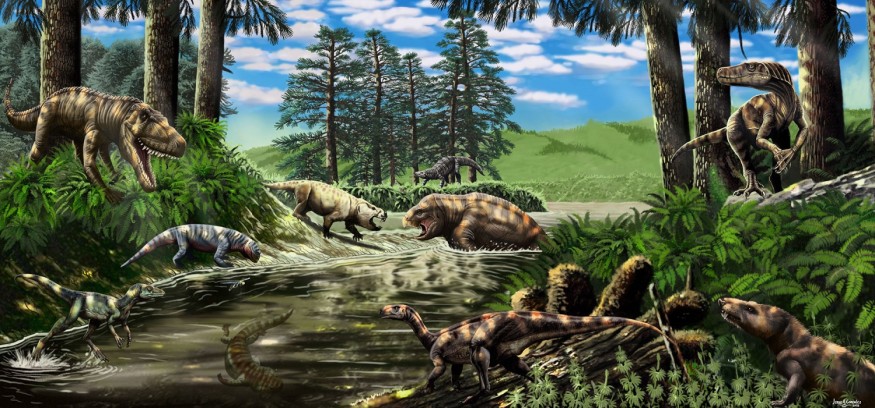CONICET experts and scholars from the University of Utah presented a collaborative study that opposes previous theories regarding the life of prehistoric species and climate. The authors suggest that the diversity of ancient floras and faunas during the existence of the first dinosaurs is not correlated with the climate change that took place in their time.
Climate Change Have Minimal Effects on Biodiversity of Prehistoric Creatures

The evidence gathered for the study, including data from clay mineralogy, sedimentology, and geochemistry implies that there was no significant association between how the populations of plants and vertebrates became diverse.
Experts included information from the paleoclimatic conditions in the Ischigualasto Formation to compare how the climate worked with prehistoric biodiversity.
The Ischigualasto Formation is located in northwestern Argentina. Today, it is part of the region shared by the San Juan and La rioja provinces. The fossil-rich area was filled with sedimentary materials brought by various streams and rivers formed throughout the ages.
The formation is estimated to have materialized between 231 and 226 million years ago, during the Late Triassic Period.
The middle part of the formation was observed with an unusual change in temperature and humidity. According to the authors, the change between the solid stack was obvious, as it showed moderate conditions compared to drier and warmer conditions measured across most of the formation. What baffled the scientists is that the fossil records between these completely different conditions did not vary.
Glaciología y Ciencias Ambientales's Instituto Argentino de Nivología CONICET researcher Adriana Mancuso, who served as lead author of the study, explained that their team found how the variations and the diversity of the ancient species could be studied more accurately through the sampling biases and preservation details rather than focusing on climate change alone.
New Approach to Study Fossils By Not Relying on Climate Change Data Only
The team said that the number of specimens within each interval, and the characteristics and features that helped to preserve or deteriorate fossils of species, are both crucial factors. Both of the categories, which are preservation and collection, greatly impact the variances of abundance between plants and animals compared to the data recorded solely via climate changes, EurekAlert reports.
But despite the minimal connection between the biotic response due to climate change and the ecosystem's evolution, University of Utah's Department of Geology & Geophysics and Natural History Museum specialist Randall Irmis, who also co-authored the study, said that they were able to observe a link between two groups of reptilians and the climatic variations.
The animals were identified as the pseudosuchians, rhynchosaurs, crocodile archosaurs, and plant-eating archosauromorphs.
Mancuso added that their work demonstrated a new methodological approach that could test climate-biota associations, highlighting the missing gaps to be filled and constructing new plausible theories that could be investigated in the future.
The study was published in the journal Frontiers in Earth Science, titled "Paleoenvironmental and Biotic Changes in the Late Triassic of Argentina: Testing Hypotheses of Abiotic Forcing at the Basin Scale."
RELATED ARTICLE : 50-Meter Long Trail of 64 One-Meter Dinosaur Footprints Appeared in Wales Beach, Confusing Locals
Check out more news and information on Paleontology in Science Times.











